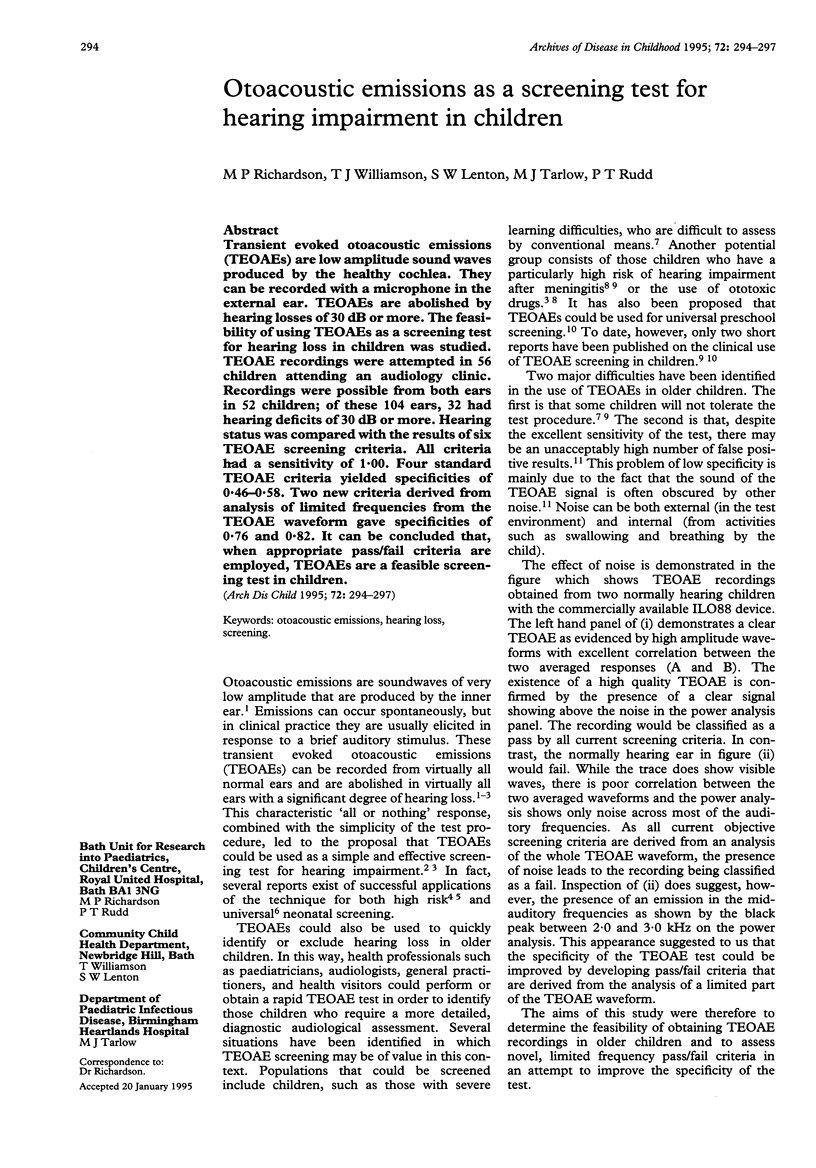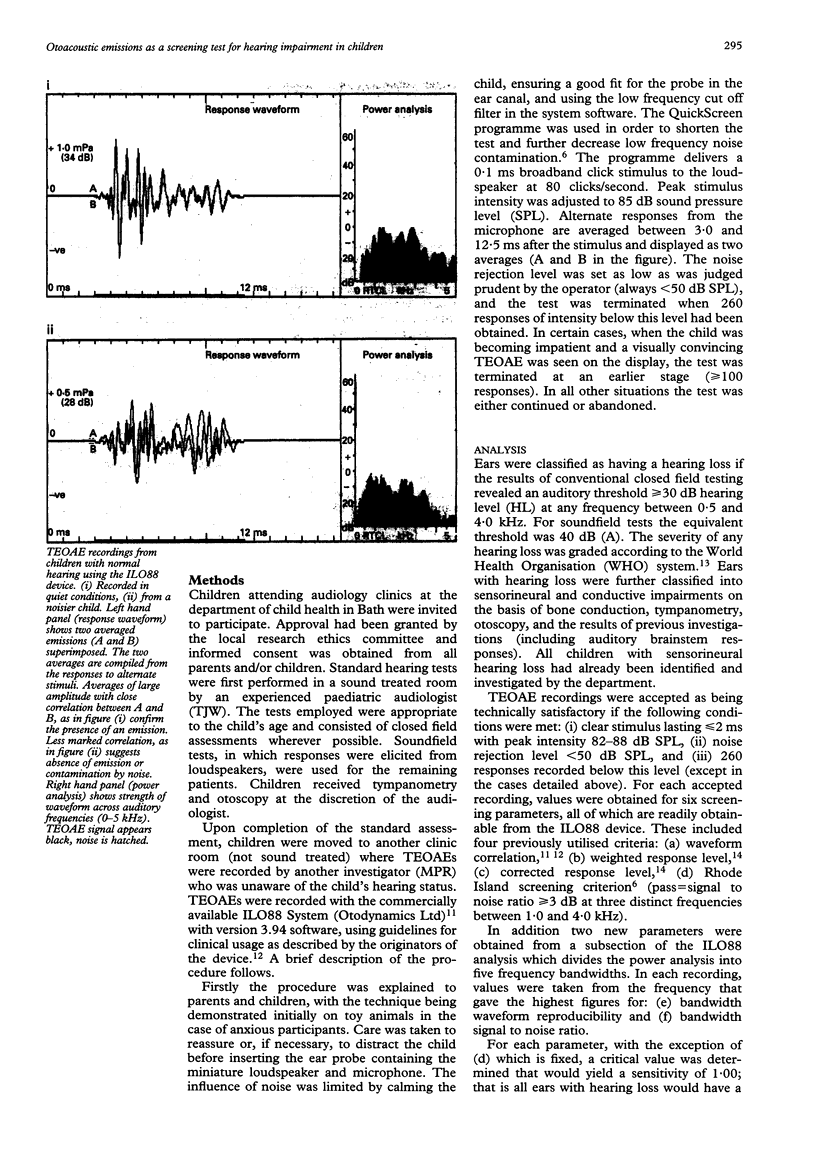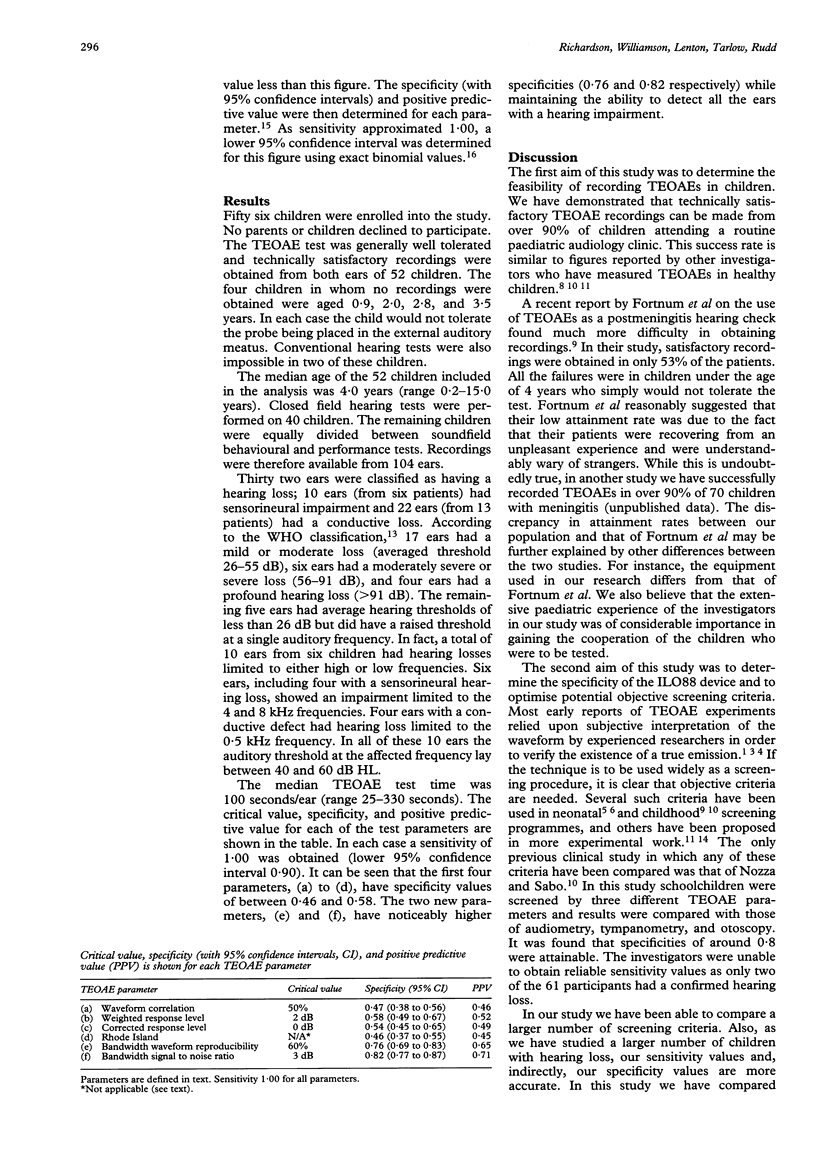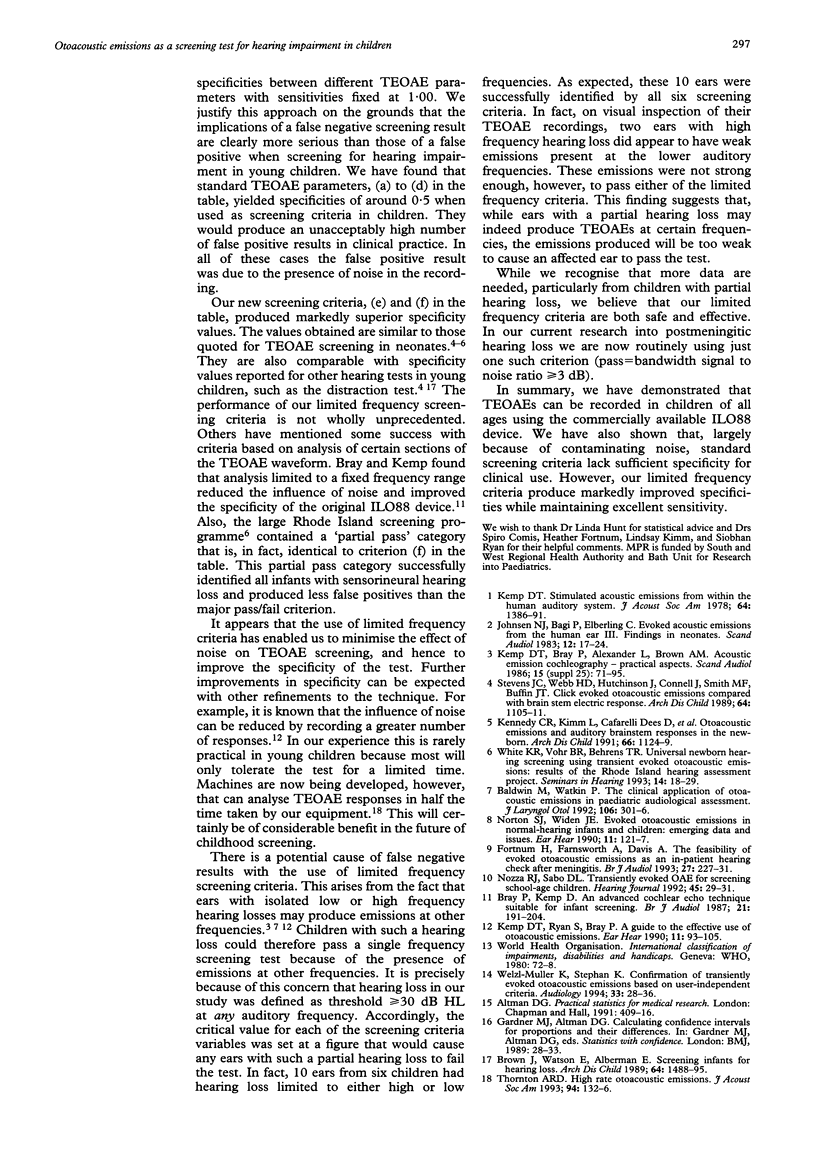Abstract
Transient evoked otoacoustic emissions (TEOAEs) are low amplitude sound waves produced by the healthy cochlea. They can be recorded with a microphone in the external ear. TEOAEs are abolished by hearing losses of 30 dB or more. The feasibility of using TEOAEs as a screening test for hearing loss in children was studied. TEOAE recordings were attempted in 56 children attending an audiology clinic. Recordings were possible from both ears in 52 children; of these 104 ears, 32 had hearing deficits of 30 dB or more. Hearing status was compared with the results of six TEOAE screening criteria. All criteria had a sensitivity of 1.00. Four standard TEOAE criteria yielded specificities of 0.46-0.58. Two new criteria derived from analysis of limited frequencies from the TEOAE waveform gave specificities of 0.76 and 0.82. It can be concluded that, when appropriate pass/fail criteria are employed, TEOAEs are a feasible screening test in children.
Full text
PDF



Selected References
These references are in PubMed. This may not be the complete list of references from this article.
- Baldwin M., Watkin P. The clinical application of oto-acoustic emissions in paediatric audiological assessment. J Laryngol Otol. 1992 Apr;106(4):301–306. doi: 10.1017/s0022215100119358. [DOI] [PubMed] [Google Scholar]
- Bray P., Kemp D. An advanced cochlear echo technique suitable for infant screening. Br J Audiol. 1987 Aug;21(3):191–204. doi: 10.3109/03005368709076405. [DOI] [PubMed] [Google Scholar]
- Brown J., Watson E., Alberman E. Screening infants for hearing loss. Arch Dis Child. 1989 Oct;64(10):1488–1495. doi: 10.1136/adc.64.10.1488. [DOI] [PMC free article] [PubMed] [Google Scholar]
- Fortnum H., Farnsworth A., Davis A. The feasibility of evoked otoacoustic emissions as an in-patient hearing check after meningitis. Br J Audiol. 1993 Aug;27(4):227–231. doi: 10.3109/03005369309076699. [DOI] [PubMed] [Google Scholar]
- Johnsen N. J., Bagi P., Elberling C. Evoked acoustic emissions from the human ear. III. Findings in neonates. Scand Audiol. 1983;12(1):17–24. doi: 10.3109/01050398309076220. [DOI] [PubMed] [Google Scholar]
- Kemp D. T., Bray P., Alexander L., Brown A. M. Acoustic emission cochleography--practical aspects. Scand Audiol Suppl. 1986;25:71–95. [PubMed] [Google Scholar]
- Kemp D. T., Ryan S., Bray P. A guide to the effective use of otoacoustic emissions. Ear Hear. 1990 Apr;11(2):93–105. doi: 10.1097/00003446-199004000-00004. [DOI] [PubMed] [Google Scholar]
- Kemp D. T. Stimulated acoustic emissions from within the human auditory system. J Acoust Soc Am. 1978 Nov;64(5):1386–1391. doi: 10.1121/1.382104. [DOI] [PubMed] [Google Scholar]
- Kennedy C. R., Kimm L., Dees D. C., Evans P. I., Hunter M., Lenton S., Thornton R. D. Otoacoustic emissions and auditory brainstem responses in the newborn. Arch Dis Child. 1991 Oct;66(10 Spec No):1124–1129. doi: 10.1136/adc.66.10_spec_no.1124. [DOI] [PMC free article] [PubMed] [Google Scholar]
- Norton S. J., Widen J. E. Evoked otoacoustic emissions in normal-hearing infants and children: emerging data and issues. Ear Hear. 1990 Apr;11(2):121–127. doi: 10.1097/00003446-199004000-00006. [DOI] [PubMed] [Google Scholar]
- Stevens J. C., Webb H. D., Hutchinson J., Connell J., Smith M. F., Buffin J. T. Click evoked otoacoustic emissions compared with brain stem electric response. Arch Dis Child. 1989 Aug;64(8):1105–1111. doi: 10.1136/adc.64.8.1105. [DOI] [PMC free article] [PubMed] [Google Scholar]
- Thornton A. R. High rate otoacoustic emissions. J Acoust Soc Am. 1993 Jul;94(1):132–136. doi: 10.1121/1.407090. [DOI] [PubMed] [Google Scholar]
- Welzl-Müller K., Stephan K. Confirmation of transiently evoked otoacoustic emissions based on user-independent criteria. Audiology. 1994 Jan-Feb;33(1):28–36. doi: 10.3109/00206099409072952. [DOI] [PubMed] [Google Scholar]


